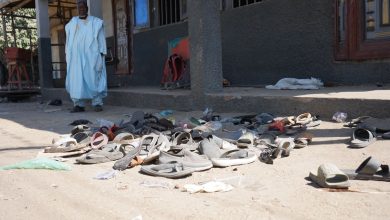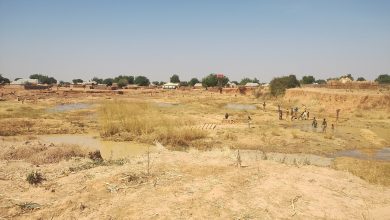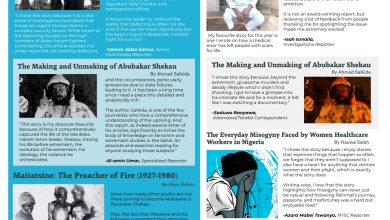Climate Migrants: The Rural Farmers Chased Into Abuja by Droughts
Amid worsening droughts and desertification in North West Nigeria, young men are abandoning ancestral farms and arriving in Abuja, the federal capital, as forces plying the informal economy.
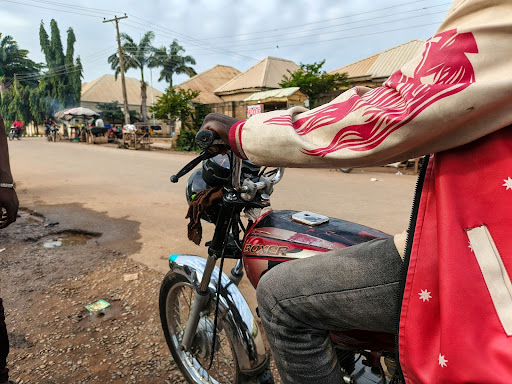
Aminu Ishaku now earns a living as a commercial motorcyclist in Abuja.
His family has five hectares of land in Chadari, a farming village in Kano State’s Makoda Local Government Area, North West Nigeria, where they once planted maize, sorghum, and millet, crops that fed and earned them some money.
Until 2021, the land never failed them completely. Some years, it brought 10 bags of sorghum, seven of millet, and nine of maize.
That year, Aminu borrowed ₦300,000 ($196) and walked into another season with faith.
“There was rain,” said the 22-year-old. “Everything germinated beautifully. We even added manure to help them grow faster. We were expecting more because of how well they sprouted.”
But the rains stopped. And for two long months, nothing fell from the sky. The young crops dried, devastating the family. No irrigation system, no borehole, no motorised pump. Just the soil and their hopes.
When the rains eventually returned, they planted again. But the second harvest was nothing close to what they needed.
“That was when I told my father I would go look for work,” Aminu said.
It was his first time leaving Kano. With only ₦2,000 ($1.31) to cover transport, Aminu, who had just finished secondary school, travelled 12 hours by road to Abuja, arriving on the outskirts of Apo, a district in the Abuja Municipal Area Council (AMAC), where the city asphalt gives way to dust.
“That is where I settled,” he said.
Each year, he returns briefly during the planting season, hoping things will be different. But it has not been.
“In 2022, there was another drought,” he said. “Then, insects attacked the crops. They grew, but the insects destroyed them. The dry spell made them vulnerable.”
In late 2023, the problem worsened.
There was flooding, said Aminu. Water swallowed homes and farmlands, and crops that survived the dry spell perished under the flood.
“That caused food shortages,” he said. “Those whose crops did not drown had to harvest early.”
“We barely had enough to eat, let alone sell,” Aminu added. “That is why I stay in Abuja to work, to support the family.”
Aminu is one of the many young men fleeing the slow violence of environmental breakdown in Northern Nigeria. For some, like 30-year-old Abdulhamid Sulaiman, the journey began earlier. Abdulhamid left Danja, a farming town in Katsina State, in 2014, long before climate change became synonymous with rural poverty.
“Rain would disappear in the middle of the season,” he said. “The crops would grow weak. Then insects would come. Sometimes they ate the maize from inside.”
When he married, his father gave him four hectares of land, where he planted maize and tomatoes.
In good years, he harvested five to 10 bags of maize and earned up to ₦250,000 ($164) from tomatoes. But the rains changed.
“The harvest could not last us till the following season,” he said. “And I did not have another job.”
Groundwater began to seep from the earth during the rainy season, soaking parts of his farm and stalling growth.
He did not know why.
“It just kept coming up, slowly, like it was rising from underneath,” he told me.
So, like Aminu, he left.
Idris Sale’s story is no different. In 2015, he left Kano for Abuja after repeated seasons of dwindling millet and cassava harvests. As food dwindled, he began searching for alternative survival means for his family.
These are not isolated stories. They are early signals of a broader shift.
A 2021 study warned that climate-induced migration could surge in states like Sokoto, Zamfara, and Katsina by 2050 under worsening environmental conditions. Northern Nigeria is already losing up to 350,000 hectares of arable land each year to desertification, a crisis that the United Nations estimates costs the country $5 billion annually in lost livelihoods.
On-the-ground reporting confirms this trend. In July, HumAngle showed how desertification and the shrinking of migration corridors are intensifying farmer-herder conflicts across the region. A 2022 investigation highlighted similar tensions in Yobe, while a 2024 story detailed how desertification continues to consume livelihoods in the Northeast.
In the same month, Balarabe Abbas Lawal, the Minister of Environment, disclosed that 50 to 75 per cent of the land across Bauchi, Borno, Gombe, Jigawa, Kano, Katsina, Kebbi, Sokoto, Yobe, and Zamfara States was now degraded, some of it permanently.
The ripple effects are devastating. The UN World Food Programme (WFP) ranks Nigeria as the country with the second-highest number of food-insecure people globally.
In the first six months of 2025, nearly 31 million people faced acute hunger, another WFP report states. The burden falls disproportionately on children. Médecins Sans Frontières (MSF), an international non-governmental organisation working in conflict zones, reported that in Katsina alone, 652 children died of severe malnutrition in just six months.
The structural vulnerability is clear. Roughly 80 per cent of northern farmers are smallholders who grow over 90 per cent of the country’s food. Yet, most lack irrigation, climate-resilient seeds, or access to state support. As environmental shocks multiply, subsistence agriculture is collapsing beneath them.
Life on the fringes
Aminu now lives in Apo, Abuja. He came here chasing the stories he had heard from others back in Chadari, that the capital held promise for those willing to work. But like many climate migrants arriving from the north, he quickly realised that without formal education or connections, the only available work was in the city’s informal economy.
“When I first came, I worked at construction sites,” he recalled.
He moved from one project to another, saving steadily until he could add to the little money he had left behind at home.
Eventually, he bought a motorcycle and started working as a commercial rider (an okada man), shuttling passengers along the busy Galadimawa-Garki-Apo corridor.
“I was making about ₦15,000 [$9.80] daily,” he said.
Out of that, he regularly sent between ₦10,000 ($6.52) and ₦15,000 home weekly.
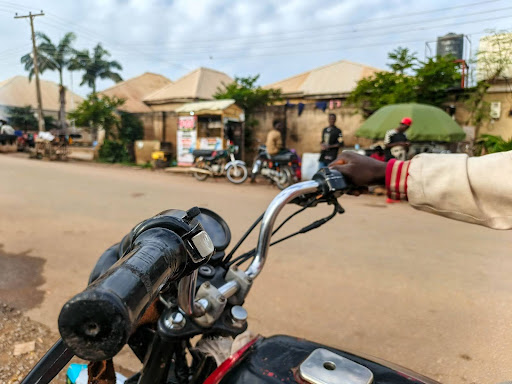
The outskirts of Abuja have become a magnet for climate migrating northern youths, who join the 93 per cent of employed Nigerians working in the informal sector.
But the city is not always welcoming.
“My first bike was seized by the VIO [Vehicle Inspection Officers],” Aminu alleged. “I had the papers, but I could not get it back.”
With no income, he returned to construction work and farming during the rainy season. After a year, he scraped together enough to buy another motorcycle, this time at a discount. That one would be stolen.
“Now I use a friend’s bike,” he said. “I ride during the day and pay him a return each evening.”
Despite better earnings, the stress wears on Aminu.
“I am making more money here,” he said, “but I have more peace of mind back home.”
His frustrations echo a broader pattern of tension between informal workers and city authorities. Multiple reports have documented how commercial motorcycle riders in Abuja face routine harassment, extortion, and crackdowns, sometimes sparking violent clashes. In April, the Directorate of Road Traffic Services (DRTS) crushed over 600 impounded motorcycles, enforcing a Federal Capital Territory (FCT) regulation that prohibits their operation in designated areas.
Abdulhamid’s story took a different turn. When he first left Danja in Katsina, he arrived in Zuba, another edge community in the FCT, where a few acquaintances from home had already settled.
“I spent five days looking for work,” he recalled. “When I couldn’t find anything, I returned home.”
But hardship forced him back. This time, he found work as a manual sand miner.
“We go from stream to stream, in different communities, digging sand by hand,” he said.
On a good day, he earns between ₦6,000 ($3.91) and ₦12,000 ($7.83). From that, about ₦2,100 ($1.37) goes into daily transport and meals.
“I send at least ₦10,000 [$6.52] every two days to my family,” he said.

“The sand is heavy, and the places are hilly. It is dangerous climbing up and down with it,” Abdulhamid added.
Worse, he has no idea the work he does may be worsening the climate crisis he fled.
Their only point of contact with the authorities is the farmers who own land near the riverbanks.
“Nobody from the government has ever questioned us,” he said.
“We just pay them [the farmers] ₦1,000 per truck of sand.”
But unregulated sand mining is accelerating erosion, destabilising riverbanks, and contributing to downstream flooding, especially in flood-prone areas like the FCT. HumAngle has documented how unchecked mining in Kano destroyed farmland and made seasonal floods deadlier. A similar report shows the issue in Ogun State, South West Nigeria.
Abdulhamid shrugged. “The sand brings fast money, but we don’t know it’s part of why floods are worse.”
A 2022 UNEP study estimates that 50 billion tonnes of sand are extracted globally each year. In Nigeria, much of this is done illegally and manually, depleting aquifers, degrading river ecosystems, and displacing communities. Ironically, the work Abdulhamid now relies on contributes to the flooding and food shortages that pushed him out of Danja.
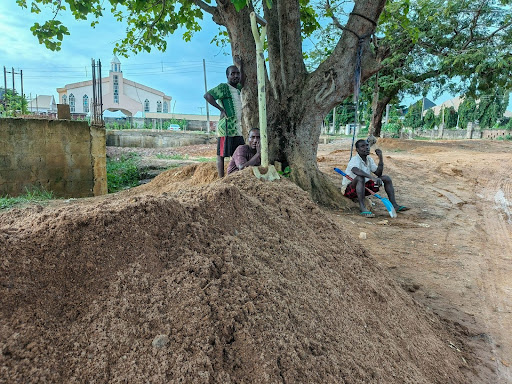
Idris Sale’s path was steadier. Since arriving in Abuja from Kano in 2015, he has moved between carpentry and construction labour.
“On a good day, I make ₦10,000 [$6.52],” he said.
He saves about ₦7,000 ($4.57) and sends up to ₦20,000 ($13.6) home weekly.
“There are more job opportunities here,” he said. “I do not get that kind of money in Makoda.”
His main challenge is not the police or permits, but broken promises.
“Sometimes, they don’t pay me at all,” he said. “Or they give less than we agreed. They just keep postponing it.”
Still, Idris believes the move has been worthwhile.
“My life has changed,” he said. “Back home, farming was failing. There was no other way to earn.”
Despite the setbacks, he sees his situation improving. But his shelter is now under threat. Since late 2023, Abuja’s city administration, under FCT Minister Nyesom Wike, has launched a sweeping demolition campaign, targeting informal settlements in what it calls a clean-up and security initiative. Dozens of communities have been levelled.
These demolished neighbourhoods used to shelter many climate immigrants.
According to UN-Habitat, a significant portion of Abuja’s population lives in informal settlements. They are not criminals or squatters, but part of the shadow workforce that keeps the city running. They dig its foundations, ferry its passengers, and haul its waste.

What policies ignore
Aminu has lived through the shifting seasons. He has felt the searing heat, watched the rains falter, and struggled through the floods. But he cannot explain them.
“Maybe it is the cultivation that drives the rain,” he said. “Before you plant, there will be rain. But after you plant, it will seize.”
Abdulhamid, too, notices the changes. The dry spells have become harsher. But when asked what causes them, he admits, “I have no idea.”
His family, like others in his community, now relies on a hand-dug well to water crops during dry periods. “An exhausting process with limited results,” he said.
Neither has access to irrigation tools or drought-resistant seeds. Climate change may not be in their vocabulary, but erratic rainfall, failed harvests, livelihood losses, and migration define their lives.
While Aminu and Abdulhamid have quietly adapted by digging wells or leaving home, Nigeria’s climate strategies have not. The country’s policy documents, from the Nationally Determined Contributions (NDCs) to the National Adaptation Plan, emphasise mitigation: solar energy, reforestation, and emission cuts. But they say little about rural youths like Aminu and Abdulhamid, those forced to migrate not by armed conflict, but by empty fields and dead crops.
The National Adaptation Plan warns of climate risks to agriculture. But it says little about the migration of young people, or the pressure that climate displacement places on informal urban economies.
Meanwhile, data paints a clearer picture. Climate-related displacements across Africa have surged sixfold since 2009, reaching 6.3 million people in 2023. While floods remain the main driver, drought-related migration is accelerating. Nigeria alone recorded over 6 million people displaced by climate events between 2008 and 2021. Yet adaptation funds rarely follow them to the cities where they resettle.
In Abuja, planning documents acknowledge flood threats, but not the steady influx of rural migrants building lives on the fringes. There is no policy for them. No targeted relief. No plan to absorb or empower.
“We are mostly farmers in Chidari,” Aminu said. “And it is rainfed farming. We cannot afford to dig boreholes in our farms, and our politicians did not construct any for us.”
He is not bitter, just resigned. “During the dry season, we are jobless. Some youths join politics as thugs. Others, like me, leave for the city.”
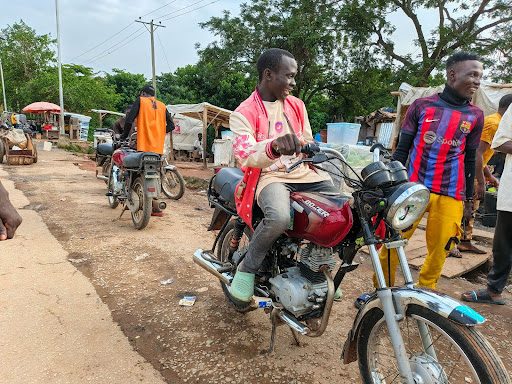
Aminu says he would return to farming in Chidari if he had access to irrigation tools, fertilisers, and pesticides. Otherwise, he sees himself remaining in Abuja’s informal economy or joining the military. “I have applied several times,” he said, “but ha’ve never been selected.”
Abdulhamid, too, says he would stay in his village if empowered with climate-smart farming tools.
“I love my village,” he said. “But the hardship and responsibilities were what made me leave.”
He wishes those in government would come and see what their policies overlook.
“If I could talk to them, I would ask them to visit the villages during the rainy season. Let them see what we go through,” he said.
Aminu Ishaku and many others from Northern Nigeria have migrated to Abuja due to the devastation caused by climate change on their farmlands. Once reliant on agriculture for their livelihood, erratic rains, droughts, insect infestations, and floods have made farming unsustainable, leading to acute food shortages. Like Aminu, many of these climate migrants have taken up work in the informal sector in urban areas, often facing challenges such as lack of formal education, job insecurity, and harassment by city authorities. Despite better earnings, the instability and pressure remain high, highlighting the need for targeted policy interventions focused on supporting rural youths and adapting agricultural practices for climate resilience.
The broader implications of these migrations are profound, with Northern Nigeria facing significant land degradation and increasing food insecurity. Climate-induced migration is predicted to surge, placing immense pressure on urban centers that are unprepared for the influx. While Nigeria's climate policies emphasize mitigation efforts, they largely overlook the direct impacts on rural youths who are forced to abandon farming and adapt to new urban realities. Empowerment through climate-smart agriculture tools could encourage many like Aminu and Abdulhamid to remain in their villages, underscoring the importance of addressing the root causes of migration and supporting sustainable livelihoods.
Support Our Journalism
There are millions of ordinary people affected by conflict in Africa whose stories are missing in the mainstream media. HumAngle is determined to tell those challenging and under-reported stories, hoping that the people impacted by these conflicts will find the safety and security they deserve.
To ensure that we continue to provide public service coverage, we have a small favour to ask you. We want you to be part of our journalistic endeavour by contributing a token to us.
Your donation will further promote a robust, free, and independent media.
Donate HereStay Closer To The Stories That Matter


